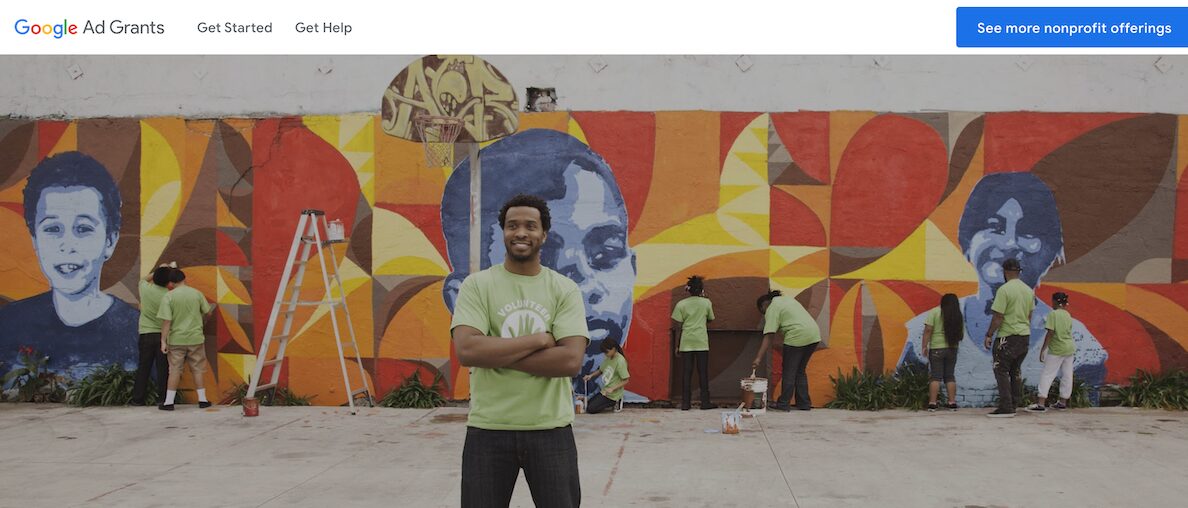Advertising can be a powerful tool for nonprofits to raise awareness, attract donors, and drive action. However, with limited budgets and resources, it’s crucial to be strategic and creative.
To make the most of your advertising efforts, it’s essential to focus on the right platforms, tactics, and strategies. This guide provides actionable tips and strategies for nonprofit advertising, helping you to maximize your impact while staying within budget.
Nonprofit Resources
The Charity Charge resource hub is dedicated to providing tips, tools, and information to help your nonprofit create and grow a modern organization. Learn more
Understand Your Audience
The first step in any successful advertising campaign is understanding your target audience. Nonprofits often have diverse stakeholders, including donors, volunteers, beneficiaries, and partners.
To effectively reach these groups, you must define clear audience segments and tailor your messages accordingly.
Tips:
- Create Audience Personas: Develop detailed audience personas based on real data. These profiles should include demographic information like age, gender, location, as well as interests, motivations, and online behaviors. Understanding your audience will help you craft targeted messages that resonate.
- Segment Your Audience: Different segments of your audience may respond better to specific messages. For example, a donor might be more interested in the impact of their contributions, while a volunteer might want to know how they can directly contribute to your mission.
- Utilize Analytics Tools: Use data from Google Analytics, Facebook Insights, and other tools to understand where your audience is most active online, and which types of content they engage with the most. Use this information to refine your campaigns and improve targeting.
Leverage Google Ad Grants

Google offers a generous program for nonprofits, providing up to $10,000 per month in free advertising through Google Ads.
This can be a game-changer for nonprofit organizations looking to increase their visibility online.
Check out our extended guide to Google Ad Grants.
Tips:
- Optimize for High-Intent Keywords: Focus on long-tail keywords that are more specific to your nonprofit’s services. For example, instead of using broad terms like “donate,” try phrases like “donate to homeless shelters in New York.” These keywords are less competitive and more likely to attract users ready to take action.
- Set Up Conversion Tracking: Implement conversion tracking on your website to monitor key actions such as donations, volunteer signups, or newsletter subscriptions. This will allow you to measure the effectiveness of your Google Ads campaigns.
- Ad Copy Matters: Write clear, concise ad copy that aligns with user search intent. Make sure to highlight the benefits of supporting your cause and include strong calls to action, such as “Donate Now” or “Get Involved.”
Utilize Social Media Advertising
Social media platforms like Facebook, Instagram, and LinkedIn offer robust advertising options that allow nonprofits to target specific demographics, interests, and behaviors.
These platforms also provide detailed analytics to measure the success of your campaigns.
Tips:
- Target Based on Interests and Behaviors: Social media platforms offer detailed targeting options based on users’ interests, behaviors, and demographics. Utilize this data to ensure your ads reach people who are most likely to engage with your cause.
- Invest in Video Content: Videos tend to receive higher engagement rates on social media. Consider creating short videos that explain your mission, highlight your impact, or showcase testimonials from beneficiaries.
- A/B Testing: Continuously test different versions of your ads to see what works best. Experiment with different headlines, visuals, and calls to action to determine which combinations generate the most engagement and conversions.
Get our checklist of the best free nonprofit tools of 2024 sent directly to your inbox
Collaborate with Influencers
Partnering with influencers who align with your cause can amplify your message and reach a broader audience. Influencers can help build trust and credibility for your nonprofit, especially if they have a genuine connection to your mission.
Tips:
- Micro-Influencers for Niche Audiences: Micro-influencers (those with smaller, but highly engaged followings) can be more effective and affordable for nonprofits than large-scale influencers. These influencers often have a more personal relationship with their audience, leading to better engagement.
- Create Authentic Partnerships: Work closely with influencers to create content that feels authentic. Instead of simply asking them to promote a campaign, involve them in your cause—invite them to volunteer or attend an event so they can speak genuinely about your work.
- Measure ROI: Use unique tracking links or discount codes for influencer campaigns to measure their effectiveness in driving traffic, donations, or volunteer sign-ups.
Focus on Storytelling
Storytelling is a powerful tool in nonprofit advertising. Sharing stories of the individuals and communities impacted by your work can create an emotional connection with your audience, encouraging them to take action.
Tips:
- Feature Impact Stories: Highlight the stories of individuals or communities that have benefited from your services. Personal stories resonate strongly and make your mission more relatable. Incorporate quotes, photos, or videos to bring these stories to life.
- Showcase Results: It’s important to show not only the need but also the positive outcomes of your efforts. Use data and testimonials to demonstrate the measurable impact your nonprofit is making.
- Storytelling Formats: Utilize a variety of formats to share your stories, such as blog posts, videos, email campaigns, or even podcast episodes. Distribute your stories across multiple channels to maximize reach.
Implement Retargeting Campaigns
Retargeting involves showing ads to people who have already interacted with your website or social media profiles. This strategy helps keep your nonprofit top of mind and encourages potential supporters to take the next step, whether it’s donating, signing up for a newsletter, or volunteering.
Tips:
- Segment Audiences by Engagement: Tailor your retargeting ads to reflect a user’s previous interactions. For example, if someone visited your donation page but didn’t complete the transaction, a retargeting ad could remind them to finish their donation.
- Time Your Ads: Retargeting can be most effective when timed correctly. For instance, display ads around giving seasons like the holidays or near important fundraising events to encourage donations at the right time.
- Use Dynamic Content: Dynamic retargeting allows you to show personalized content to users based on the pages they visited on your site. For example, if someone viewed your volunteer opportunities, show them ads encouraging them to sign up.
Track and Measure Success
To ensure your advertising efforts are effective, it’s essential to track and measure the results of your campaigns. This will help you identify what’s working, what needs improvement, and where to allocate resources in the future.
Tips:
- Define Clear KPIs: Set measurable goals for each campaign, whether that’s increasing traffic, generating donations, or growing your social media following. Common KPIs include click-through rate (CTR), cost-per-click (CPC), and conversion rate.
- Use Attribution Models: Understand which touchpoints lead to conversions by using attribution models in Google Analytics or your social media advertising platform. This helps you identify which channels or campaigns are driving the most impact.
- Adjust Campaigns Based on Data: Regularly review your data and make adjustments to underperforming ads. Stop campaigns that are not yielding results and reinvest in those that are performing well.
Budget Wisely
Nonprofits often operate with limited advertising budgets, so it’s crucial to maximize the impact of every dollar spent. Focus on channels and strategies that offer the highest return on investment (ROI).
Tips:
- Start Small and Scale: Launch small campaigns first to test the effectiveness of your strategies. Once you see what works, you can scale up your investment in those areas.
- Use Free Tools: Take advantage of free or discounted tools for nonprofits, such as Google Ad Grants, to stretch your budget further.
- Consider Time-Sensitive Campaigns: Maximize your budget by running ads during specific times of the year when donations or engagement are most likely to be higher, such as year-end giving or Giving Tuesday.
Effective advertising can significantly enhance your nonprofit’s ability to reach new audiences, engage supporters, and drive meaningful action. By understanding your audience, leveraging free and paid advertising platforms, collaborating with influencers, and focusing on storytelling, your organization can create impactful campaigns that resonate and inspire.
Remember to track your results and continuously refine your strategies to ensure long-term success.
Whether you’re a small nonprofit with a limited budget or a larger organization looking to expand your reach, these tips and tricks can help you maximize your advertising efforts and achieve your mission.
















